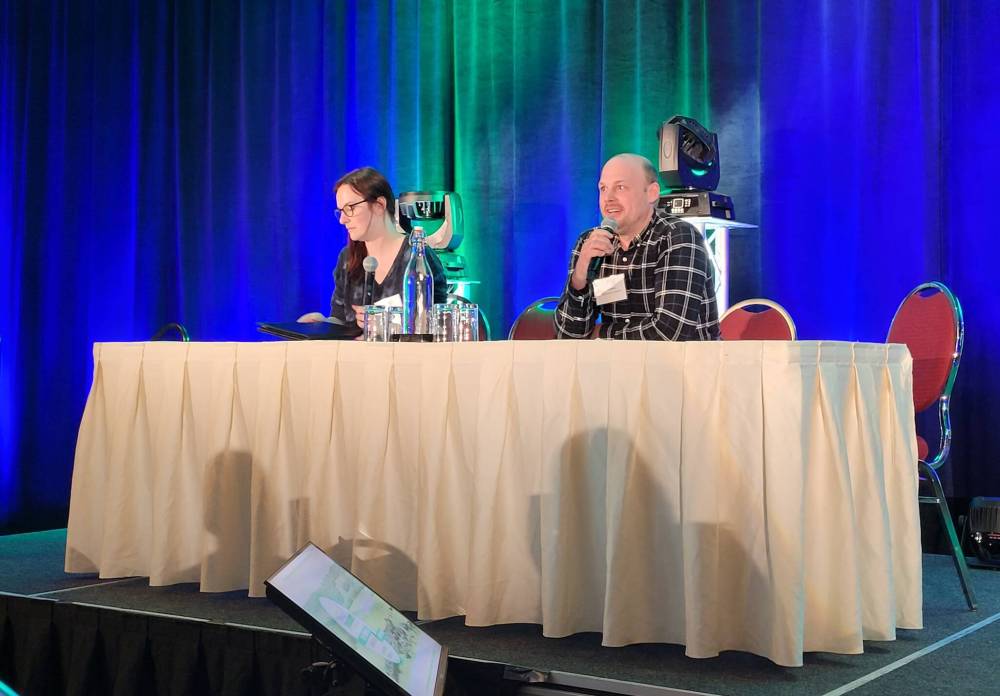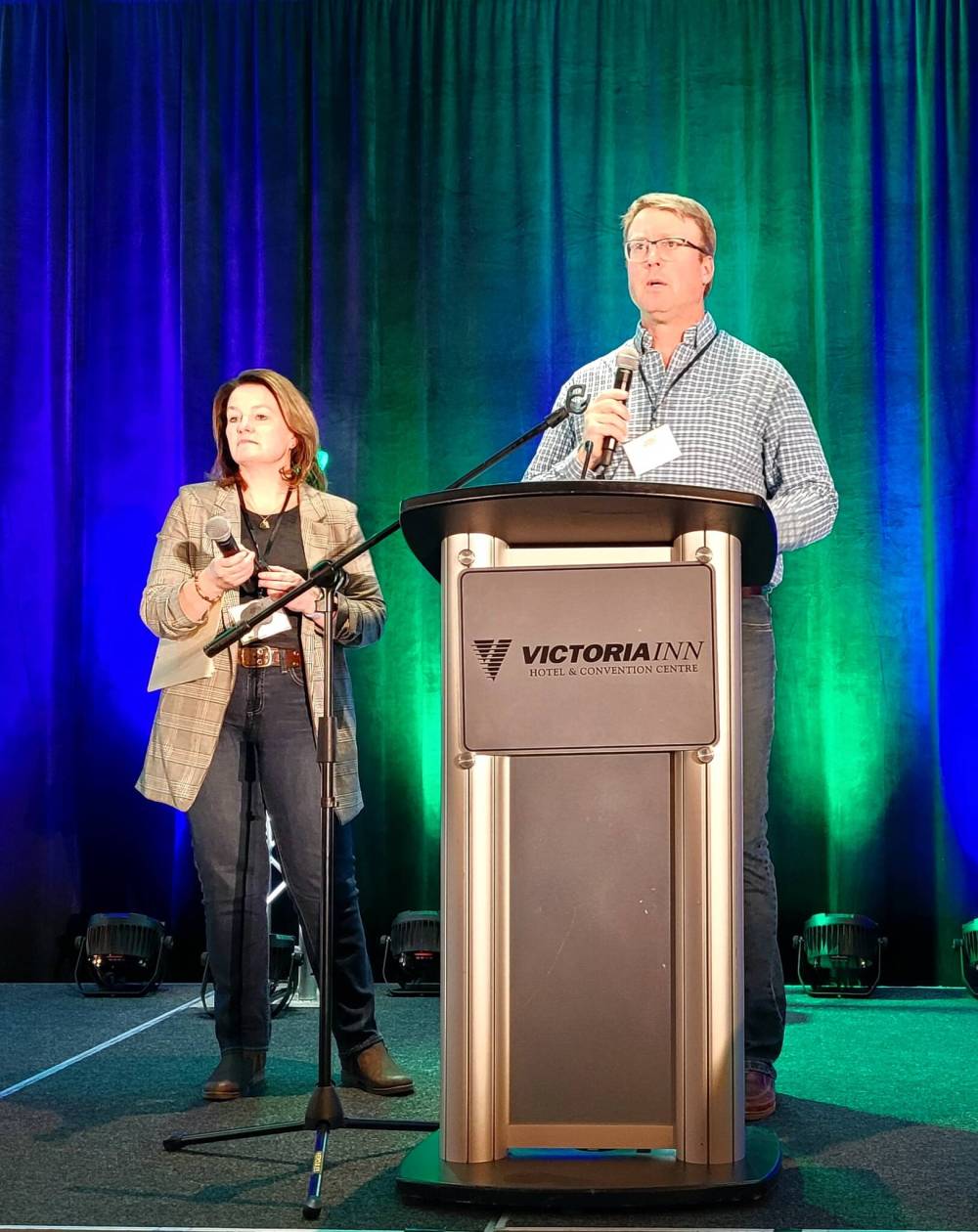Conference discusses legacy of regenerative ag
Advertisement
Read this article for free:
or
Already have an account? Log in here »
We need your support!
Local journalism needs your support!
As we navigate through unprecedented times, our journalists are working harder than ever to bring you the latest local updates to keep you safe and informed.
Now, more than ever, we need your support.
Starting at $15.99 plus taxes every four weeks you can access your Brandon Sun online and full access to all content as it appears on our website.
Subscribe Nowor call circulation directly at (204) 727-0527.
Your pledge helps to ensure we provide the news that matters most to your community!
To continue reading, please subscribe:
Add Brandon Sun access to your Free Press subscription for only an additional
$1 for the first 4 weeks*
*Your next subscription payment will increase by $1.00 and you will be charged $20.00 plus GST for four weeks. After four weeks, your payment will increase to $24.00 plus GST every four weeks.
Read unlimited articles for free today:
or
Already have an account? Log in here »
Hey there, time traveller!
This article was published 23/11/2023 (692 days ago), so information in it may no longer be current.
Manitoba Forage & Grassland Association’s 2023 Regenerative Agriculture Conference was held at the Victoria Inn in Brandon Nov. 13-15, with a theme of “Building the Legacy.”
The two-and-a-half-day event marked MFGA’s sixth annual conference focusing on regenerative agriculture, an approach to land management with specific practices that vary from grower to grower that are meant to restore soil and ecosystem health and leave the land, waters and climate in better shape for future generations.
Andrea Hamilton, who co-chaired the conference with Amber McNish, said the theme of “Building the Legacy” shone a spotlight on regenerative agriculture and how it can leave a lasting, positive legacy on the land.

Jim Appleby of Stoney Brook Creamery in Friedensfeld, Man., located 294 km southeast of Brandon, shared his thoughts on regenerative agriculture at the Manitoba Forage & Grassland Association’s sixth annual conference on Nov. 13-15 in Brandon. (Miranda Leybourne/The Brandon Sun)
“A lot of people are building a new legacy within this generation, and different mindsets of different producers are coming into the industry, bringing in different practices,” she said.
Highlights from Nov. 13 included Derek and Tanis Axten, owners of Axten Farms Ltd. in Minton, Sask., located 418 kilometres southwest of Brandon, speaking on shifting practices in farming that will help to shape a healthier world for tomorrow.
The first Axtens arrived in the Minton area in 1916, and the family still farms on the original homestead today. Since then, they’ve expanded the farm, and in 1973 formed Axten Farms Ltd. At that time, it was believed that the only way to control weeds and plant seed was to aggressively work and disturb the soil, but over the years the idea of summer fallow became much more palatable to the Axtens.
Summer fallow, often called fallow cropland, is cropland that is purposely kept out of production during a regular growing season, allowing the ground to rest. The technique provides enough extra moisture and nutrients to allow the growth of crops which might otherwise not be possible.
Many farmers seed all of their land and use chemicals to help control weeds and diseases and have become dependent on chemicals and fertilizers. The Axtens didn’t want this to happen at their farm, so they undertook years of research and discovered that the key to success is soil health. Since 2007, they have used a low-disturbance, no-till drill, with the goal of seeding while moving as little soil as possible. By not tilling the land and growing high residue crops, the Axtens reduce their water and wind erosion. Soil tests have shown that organic matter on their farm is on the rise thanks to these and other practices.
In advising other producers on how to incorporate some restorative agriculture methods on their farms, Derek said it’s important to pay attention to selection and crop rotation.
“If you’re ever not sure, just do small areas to start with and experiment from there. That’s a good way to learn,” he said.
And while not every field will be suitable for intercropping — cultivating two or more crops simultaneously on the same field — Derek advises producers to pay attention to the types of resources the land needs.
Tanis said the Axtens are now focusing on building a community of other producers and consumers.
“We’re having a lot of meetings, learning about how social media is very important to make those connections and to tell your story and show transparency,” she said.

Kristelle Harper (right), of Circle H Farms just outside of Brandon and Jim Appleby (left) of Stoney Brook Creamery in Friedensfeld, Man., took part in a producer panel at the Manitoba Forage & Grassland Association’s sixth annual conference on Nov. 13-15 in Brandon. (Miranda Leybourne/The Brandon Sun)
It’s amazing how quickly that community is growing, Derek added.
“I think people want us to succeed,” he said.
The couple hopes their business will help grow their home village, which has a population of 60 people.
“We really want to see our town succeed. There’s a lot of things we’ve tried to do to keep it afloat, and it’s difficult,” Derek said. “We’re not really on the road to anywhere, so we don’t have any other industry.”
After a question-and-answer period with the Axtens, Jim Appleby of Stoney Brook Creamery in Friedensfeld, Man., located 294 km southeast of Brandon, and Kristelle Harper, of Circle H Farms just outside of the Wheat City, hosted a producer panel, which was a chance to tell the audience about their businesses and answer any questions they might have.
Appleby was raised on his family farm and lived there until he was 17. He came back 10 years ago and began working with his family on gaining organic status for their dairy farm and operations.
“I could build on my parents’ legacy of building that dairy farm and moving into organic production and doing the best they could to make healthy food for a healthy community,” he said.
The move to organic was followed by selling organic milk. In the time since the business has moved to organic, the number of other organic dairy farms dwindled, until Stoney Brook Creamery was the only one left.
The organic milk is used for chocolate milk, kefir, whipping cream, cottage cheese, mozzarella, cheddar and more.
“We’ve been farming organically for about 15 years,” said Appleby, whose father runs the farm while he oversees operations at the creamery.

Tanis (right) and Derek (left) Axten, owners of Axten Farms Ltd. in Minton, Sask., spoke at the conference on shifting practices in farming that will help to shape a healthier world for tomorrow. (Miranda Leybourne/The Brandon Sun)
The hardest part of running the business in a direct marketing model is the marketing itself, Appleby said. The farm features a small store, which caters to customers who come by to pick up their milk and gives them a chance to see what other products are offered.
“It’s nice to be able to come to the farm and see it, so that is a small piece of the marketing, and then a bigger piece of the direct marketing is … farmers’ markets,” he said, adding he also relies on word of mouth as a marketing strategy.
After a full afternoon of presentations and panelists, and a trade show, the evening saw Duncan Morrison, MFGA’s executive director, give a snapshot of the organization’s collaborations with product leaders, partners, and sponsors.
On Nov. 14, producers heard presentations on pollinators on Prairie landscapes, the relationship between beef and bees, organic dairy operations, and more. After dinner, attendees got to take in the Manitoba premiere screening of “Common Ground,” a movie about how regenerative agriculture can help heal the soil, people’s health, and the planet.
On Nov. 15, Dr. Steven Frey of Aquanty in Waterloo, Ont., spoke about Manitoba water resources in climate change, and a session was held on how understanding the carbon cycle can support a healthy farm system. A next generation farmer panel was held before the conference wrapped up with a 50/50 draw.
» mleybourne@brandonsun.com
» X: @miraleybourne
